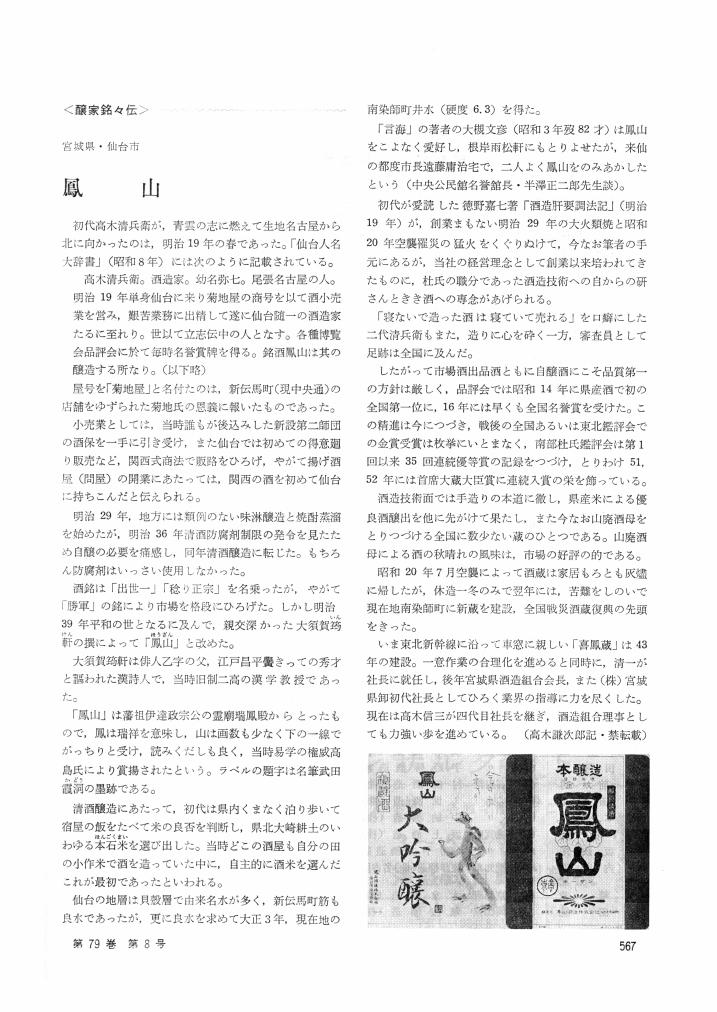1 0 0 0 OA 4-トリメチルシロキシ-1,3,8-ノナトリエンの合成と分子内Diels-Alder反応
- 著者
- 高木 謙 山田 道男 大杉 政克 根来 健二
- 出版者
- 公益社団法人 日本化学会
- 雑誌
- 日本化学会誌(化学と工業化学) (ISSN:03694577)
- 巻号頁・発行日
- vol.1987, no.2, pp.260-262, 1987-02-10 (Released:2011-05-30)
- 参考文献数
- 8
- 被引用文献数
- 1
Oxy-Cope rearrangement of 4-vinyl-1, .6-heptadien-4-ol [1] at 330°C gave 1, 8-nonadien-4one [4] along with 2, 8-nonadien-4-one [5]. The ketone [4] was converted to the title compound [2] as a mixture of (E)- and (Z)-isomers, by the treatment with LDA and, trimethylsilyl chloride. Alternatively the nonatriene [2] was prepared selectively by the anionic oxy-Cope rearrangement of [1] followed by quenching with trimethylsilyl chloride. Intramolecular Diels-Alder reaction of [2] afforded only cis-3 a-trimethylsiloxy-2, 3, 3 a, 6, 7, 7 a-hexahydro-1 H-indene [3], irrespective of the stereochemistry of [2].
1 0 0 0 OA 鳳山
- 著者
- 高木 謙次郎
- 出版者
- 公益財団法人 日本醸造協会
- 雑誌
- 日本釀造協會雜誌 (ISSN:0369416X)
- 巻号頁・発行日
- vol.79, no.8, pp.567, 1984-08-15 (Released:2011-11-04)
1 0 0 0 舌痛を訴えた症例に対するフルボキサミンの使用経験
- 著者
- 永井 哲夫 藤野 雅美 若林 類 角田 博之 高森 康次 角田 和之 高木 謙一 中川 種昭 宮岡 等 片山 義郎
- 出版者
- 日本歯科心身医学会
- 雑誌
- 日本歯科心身医学会雑誌 (ISSN:09136681)
- 巻号頁・発行日
- vol.18, no.1, pp.37-40, 2003
A 53-year old woman complained of a diverse range of symptoms, including sharp pain at the side and root of the tongue, feelings of anxiety, parching, depression, and exhaustion, and early-morning awakening. She had a high score of D on the Minnesota Multiphasic Personality Inventory (MMPI), and was diagnosed as suffering from light depression. Treated with 50mg/day of fluvoxamin, the insomnia was relieved after two weeks, the feelings of depression after four, and all symptoms, including the glossal pain, after eight. The dose was gradually reduced and then stopped altogether after six months. Fluvoxamin is easy to use in the ordinary dental clinical environment because it has almost no anticholinergic effects or cardiovascular side effects. It is thought to show promise for use as a medication for treating a variety of complaints in the oral area.
1 0 0 0 OA 自己臭症状 (口臭) を伴う思春期妄想症の1例
- 著者
- 角田 博之 宮岡 等 高木 謙 角田 和之 高森 康次 永井 哲夫 中川 種昭 藤野 雅美 片山 義郎
- 出版者
- Japanese Society of Psychosomatic Dentistry
- 雑誌
- 日本歯科心身医学会雑誌 (ISSN:09136681)
- 巻号頁・発行日
- vol.18, no.2, pp.85-88, 2003-12-25 (Released:2011-09-20)
- 参考文献数
- 7
“Adolescent paranoia” includes phobias of emitting foul odor from one's own body, fear of eye-to-eye confrontation and dysmorphophobia.A 21-year old man visited the department of dentistry of our hospital complaining of foul breath, whose concern about his odor was delusional. He also exhibited “egorrhea” symptoms, such as fear of eye-to-eye confrontation and monologue, and was diagnosed as having adolescent paranoia by a psychiatrist. The patient had started avoiding people, shut himself away in his room and talked to himself from the age of 15 or 16, after initially becoming concerned about his pimples. He also became concerned about foul breath and having suspicious eyes from the age of 17, felt that others were avoiding him, and became self-recriminatory. He later presumed that his thoughts were being expressed by his mouth contrary to his will.The self-rating questionnaire for assessing the severity of phobia of emitting foul breath received a high score of 36 out of 40. The questionnaire indicated the delusion of having halitosis, delusion of reference and poor social adaptability. He was, accordingly, diagnosed as suffering from Group III (severe) type of phobia of emitting foul breath. On the day of his first visit, he was also examined by a psychiatrist, and diagnosed as having adolescent paranoia and administered 1 mg of risperidone.This patient's symptoms suggested the possibility of schizophrenia. Thus it was preferable to pay attention to other symptoms of schizophrenia and the patient was therefore observed carefully.Dentists are likely to receive outpatients of this type who require immediate referral to psychiatrists. The case of this patient demonstrates the importance of an accurate differential diagnosis regarding complaints of emitting foul breath.
